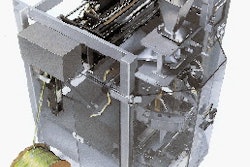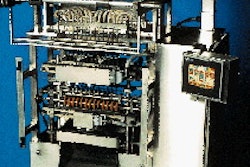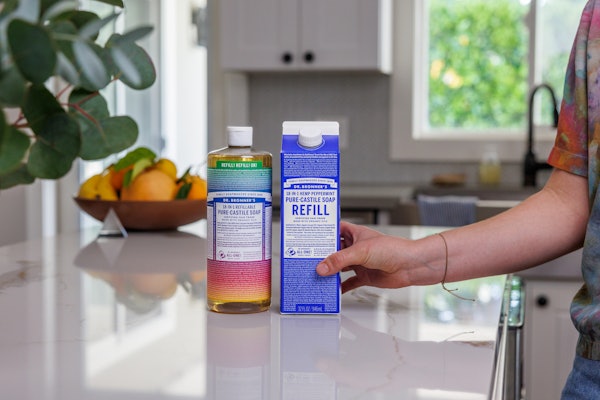From the answers, it's obvious there is no single uniform solution, and often a respondent's area of expertise influenced his or her reply. For the most part, the respondents identified manuals, diagrams, wiring schematics, parts lists and training tools to be provided to the customer at or near the completion of a project.
However, some answers were surprising. It's important to keep in mind that this was a telephone survey, so respondents had little time to prepare their thoughts.
At a major distillery, the operations manager viewed documentation in terms of a project's progress. He said: "We begin with a proposal, timelines and schedules. Then we ask for periodic meetings and written updates, at first monthly and then weekly, once installation begins. At the project's completion, we'll have an internal weekly meeting and then monthly for at least six months, and we'd expect a representative from the vendor to participate."
A maintenance supervisor for a regional soft drink company certainly had compliance on his mind: "I'd want EPA forms completed and OSHA forms completed and filed." He also asked for X-ray evidence of welds on machinery. However, he also asked for upgraded drawings and manuals for equipment and training. The plant engineer at a Pennsylvania beverage packer became unusually detailed in his needs. "Complete line layouts and [schematics] of the electrical package. Also, equipment specs, conveyor speeds, motor reduction ratios, control panel specs, electric hardware specs, processor specs, I/O documentation, photoeye specs and documentation, communications specs and protocols, and analog specs."
Some respondents answered candidly that the required documentation would be decided elsewhere. The maintenance supervisor for a California beverage packer admitted he wasn't sure. "Corporate engineering would have all that worked out," he told PW. A project engineering technician for a national pharmaceutical maker said: "It would be called out in the specifications of the contract."
At other levels in the pharmaceutical business, respondents were far more specific. The head of packaging engineering for another major pharmaceutical company sought: "Finalized sets of drawings and working drawings; complete validation of equipment; mechanical and electrical systems' drawings. In our business, documentation isn't just important; it's critical. It would be ongoing from the beginning of the project right through to final turnover of the project to us."
Others even specified the documentation media. At a major personal care packager, its manager of manufacturing engineering responded: "All drawings should be on CAD disk and hard copy. The PLC programming would be on disk or tape-and be accompanied by annotated hard copy."
Other requirements often mentioned included as-built drawings, spare-part lists and commercial bills of materials. The engineering manager for a major brewery in California wants "as-built drawings provided in CAD or InterGraph formats." Along with operational and training manuals, several beverage industry respondents also asked for safety manuals and training.
Bottlers eye safety
"Everything needs to be documented, especially all changes," said the vice president of production for a national distillery. "All processes and manuals for training must be provided. We're also looking for safety documentation and training because that's one of our primary concerns."
The maintenance engineer at a Mid-Atlantic regional soft drink bottler also emphasized safety. "We need releases from all suppliers, and compliance with safety rules coupled with documentation of any hazards," he stated. Safety and training manuals rated near the top of the list for the plant manager of a Southeastern soft drink plant.
Another soft drink industry respondent displayed his company's concerns with both economics and performance. "The documentation would have to include a written proposal of everything we would have to pay for," noted this president of a major soft drink franchisee in Ohio. "We expect very tight specifications, and we might want to use an outside consultant to ensure the project met those specs," he added for emphasis.
Even some degree of secrecy pervaded the concept of documentation. A project engineer for a Northeast personal care manufacturer answered: "Machine CAD drawings from the vendor are required on a need-to-know basis as they concern tooling for our equipment."
Troubleshooting guides
It's likely that many of these answers reflect individual frustrations about equipment documentation rather than actual corporate requirements. Nonetheless, they certainly indicate areas that could be improved.
The maintenance manager for a Midwest regional distillery specifies that he'd like the machinery part list to identify those available from the OEMs and those only available from component suppliers. Along with machinery instructions and manuals, he'd also require "an overall troubleshooting guide."
The plant engineer for a New Jersey food ingredients maker also wants a guide to troubleshoot equipment. Plus, he seeks "video training for machines in both English and Spanish."
A production scheduler for the Nebraska plant of a major food processor wants to be able to plan maintenance better. "We want the expected replacement cycles for machines and parts, and the availability of each," he says. Even before the start of a project, he "wants evidence of reliability and machinery uptime documentation."
Validation more complex
Like their skepticism about outside turnkey providers understanding pharmaceutical requirements, the survey respondents from the medical/pharmaceutical business emphasize that their documentation needs are more detailed and specific than the other industries queried. FDA's validation process gets much of the credit for this.
"Because we make medical devices, any project must meet FDA requirements, ISO requirements and our quality requirements," says the plant engineering manager for a major California medical manufacturer. "Basically, if you have very extensive documentation during design, installation and set-up, it helps a great deal with validation."
After listing the drawings, manuals and qualifications for an Ohio pharmaceutical company, its senior equipment engineer noted: "The FDA has a rigid set of qualifications that few outside the industry can meet. Four-X-process authority is a term some people know, but it has a very specific meaning within our industry."
A project engineer for an East Coast maker of both personal care and OTC drug products explains that documentation depends on the product. "If it's a pharmaceutical, it requires far more documentation than do our health and beauty products. But even our HBA products are requiring more extensive documentation these days. More specifically, we need machine certification and good documentation for operations and training."
Materials, controls studied
While machinery qualification is high on the lists for pharmaceutical engineers, the packaging materials and components were not overlooked by survey respondents from that sector. "We'd require a list of materials that come in contact with the product. That's very important in our industry," says a project engineer at one of the largest pharmaceutical companies.
A mechanical engineer at a Southeastern plant of a national drug company had a lengthy list of documentation requirements. He also specified the need for "Material Safety Data Sheets for any materials handled by the equipment involved," and added that his company required copies of operator interface software, along with recommended preventive maintenance procedures.
"All machinery testing and qualification processes need to be documented," says the packaging engineer at a Midwest manufacturer of OTC drugs and health care products. "We need to see the results of start-up and changeover timing, too."
The senior project engineer at another national pharmaceutical company admits that keeping up with the documentation needs is very difficult. "Our requirements are almost unfathomable," he says. "For example, our documentation requirements for control software are currently doubling every two months."
As daunting as that sounds, at least one respondent injected a dose of reality.
After reeling off a long list of manuals, drawings and diagrams, the staff engineer for a national medical device maker admitted, "We often get a lot less than that to work with, however."























